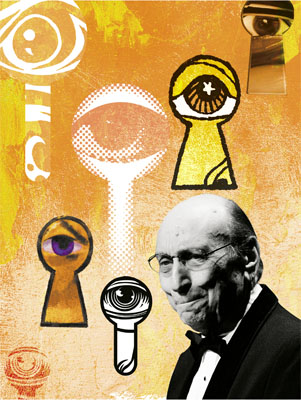
Milton Glaser: Make a Distinction between What is Art and What is Not Art
In design, as in life, it always pays to abandon preconceptions
Among the most celebrated graphic designers in the United States, he has had the distinction of one-man-shows at the Museum of Modern Art and the Georges Pompidou Center. Earlier this year, he was awarded the National Medal of Arts by President Barack Obama. The first designer to receive this honour, he is responsible for some of the most iconic visuals of our times like the I Love New York logo. Forbes India had the privilege of working with him in the early stages of this magazine’s design.
Art is whatever.” This definition tries to avoid defining what art is, except in terms of its effect on you. It can be “whatever”. It can be a rug. It can be a carving, it can be “whatever”. But, what determines whether it falls into what we call the category of art is not about its form, but about its effect.
I make a distinction between what is art and what is not art. I don’t divide the universe between what is contemporary and what is historical. The aspirations of art are not about the moment of time that you’re in, but rather about the continuity of human experience. Art has always functioned in the same way. It changes your perception of what is real.
Art is an invention of mankind in order to survive, a mechanism for the survival of the species. In order to survive, you have to understand what is real. One may question what we mean by reality. My own notion is that it all begins in the brain, with observation and attentiveness. Without that we have no way of understanding our relationships with others and ourselves. And, for me at least, the arts in general have this one overriding function. They prepare us to observe what is real in the world without preconception. It is a characteristic of all art produced by all people through all time. Art has the capacity to produce attentiveness. If it is something else — not art — it does not produce attentiveness. Design can be art.
Utility is an essential characteristic of design but it is does not change perception. So when you go into an extraordinary interior, for instance, which is supposed to be “design”, if it moves you to understanding, it is also art. But as we know, many interiors do not move us to understanding. Many paintings do not move us to understanding. The characteristic of art is not its function, but its effect on the brain.
And so, we come to what I believe is useful in a kind of discussion like this, where you’re interested in the commonality of human beings: The suspension of belief. What people have to do is to stop believing and begin to observe. And the way I have been expressing that in relationship to art and design, is that attentiveness, in the Buddhist sense, becomes the way by which commonality, the observation of the real, is possible.
To me, that has always been the essential function of art: To make you attentive. In the presence of art, you begin to become aware of something which you were not aware of before you experienced it. This characteristic, of not coming to reality or to life with a preconceived idea of what it is, and being willing to accept what you pay attention to, is the only hope for all of us.
Once we come to life with an existing series of beliefs, the conception of commonality disappears. So, suspend ideology, suspend previous beliefs about what the world is. Attempt to experience it directly, by observation and attentiveness. Beyond that, I can’t imagine any other way to develop the sense that we are all in the same boat, experiencing the same needs and wants.
A rather elaborate, complex idea and not easily obtainable, but it seems to me that the first thing one has to do is keep away from existing belief systems, what people already hold in their minds, in order to establish a new paradigm. A new religion — I think that’s really what it is. It basically means that you give up what you already believe and try to be attentive to what is real.
(This story appears in the 04 June, 2010 issue of Forbes India. To visit our Archives, click here.)
-
 B V S Prathap
B V S PrathapHighly complex idea. And yet, the attentiveness is the essence of many religions. The highest goal of spirituality. In a way, art then facilitates attaining the unattainable state of mind, just by experiencing it.
on Jun 13, 2010















